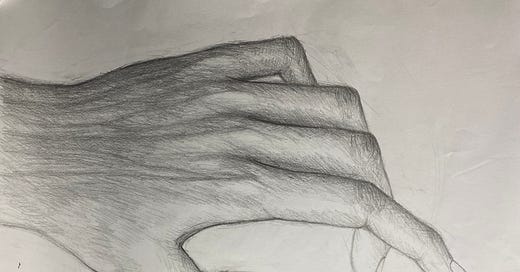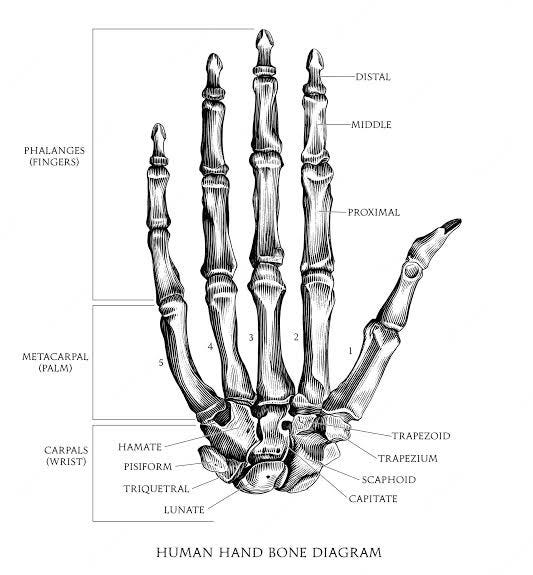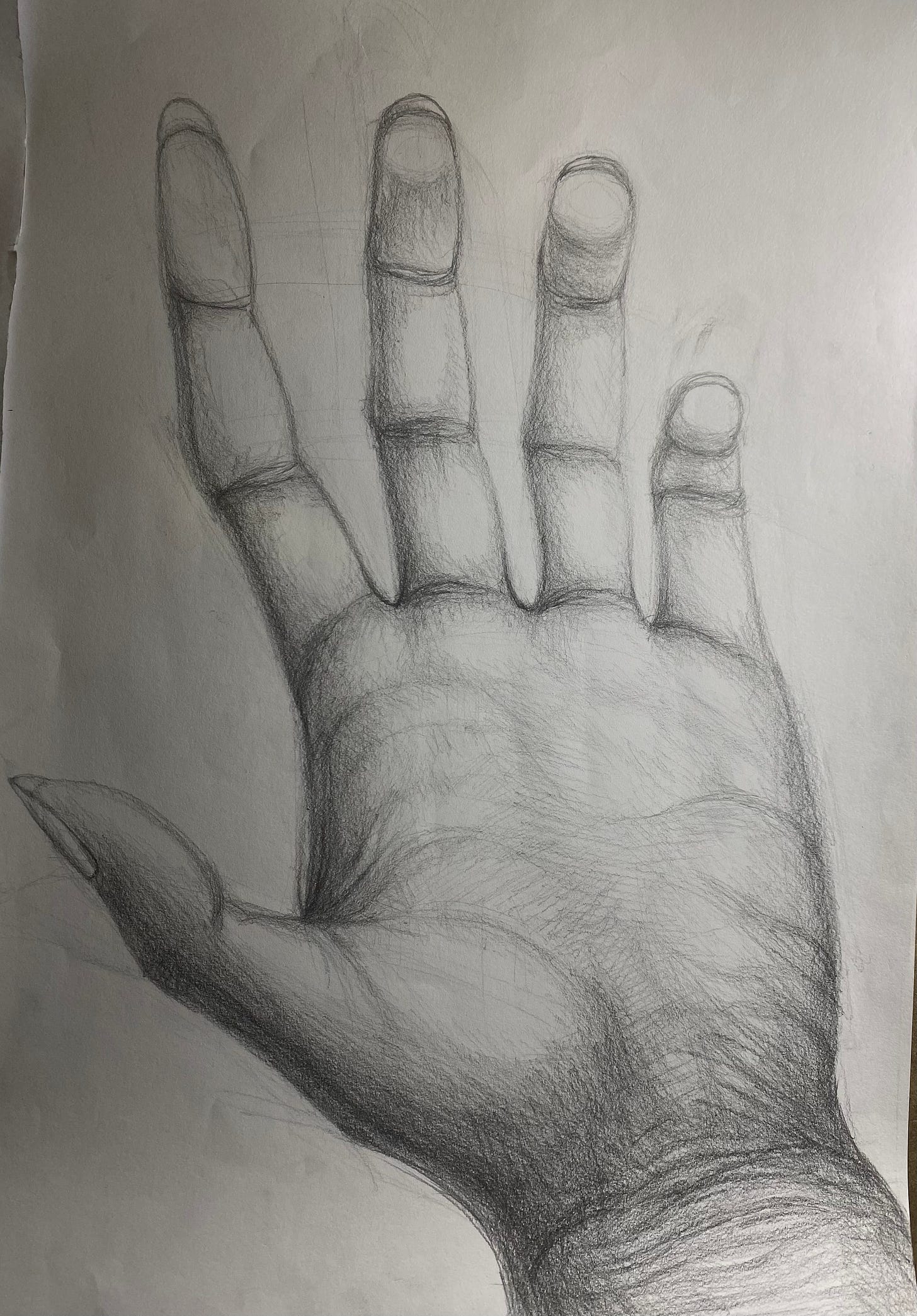Drawing Human Hands
Human hands are highly functional, mobile in various ways, and complicated in structure. It is a subject that many artists are familiar with and even struggle with. This struggle comes from the fact that a human hand has 27 bones, including five little limbs called fingers:
This diagram1 shows that 8 of these bones are located in the wrist, 5 of them are located in the palm, and the remaining 14 are located in the fingers and thumb.
The bony structure and little soft tissues on top of them give the hands a defined shape. There are lots of bulges, pits, and little limbs caused by the alignment of bones.
The versatility of the hands comes from the coherent work of the bones and joints. Our hands have evolved over time to enable us to do even extremely complicated tasks. We can put our hands in many different positions and thus we can see them from various angles.
Studying hands require observation from multiple positions. My teacher said the best way to study is to observe, touch, and feel the form of the hands and bones. Bones are the foundational structure on which the hand's shape is based, so touching is essential when learning hands.
My art teacher suggested everyone to look at their own hands. As a start, I began to draw with the dorsum (back) and the palmar side of my hand:
A hand is a natural form, it is not rigid, so the contour lines should not be angular or linear. Even the veins and tendons in the hand are not linear or angular. To give the hands a more natural look, there should be a soft gradation from dark to light.
These were the first hand studies that I made. While they are far from perfect, studying hands should be done regularly to improve. It was challenging to draw my hand on a paper much larger than my hand, but I feel more comfortable using all my arm joints, including the shoulder while working on a large piece of paper.
“Hand Bones Images: Free Vectors, Stock Photos & PSD.” Freepik, 5 Jan. 2022, www.freepik.com/free-photos-vectors/hand-bones.





